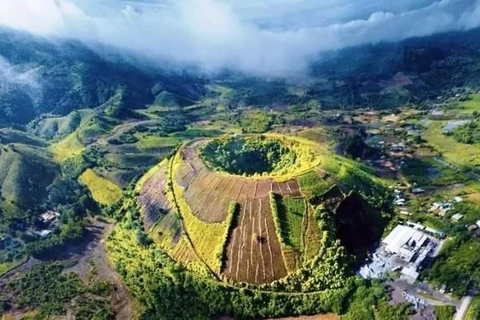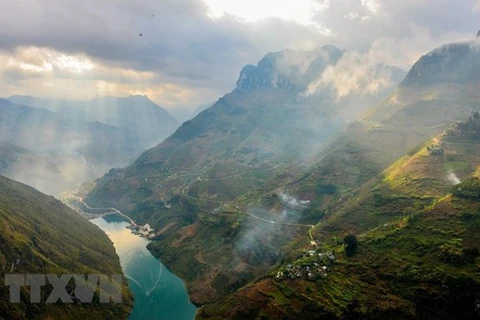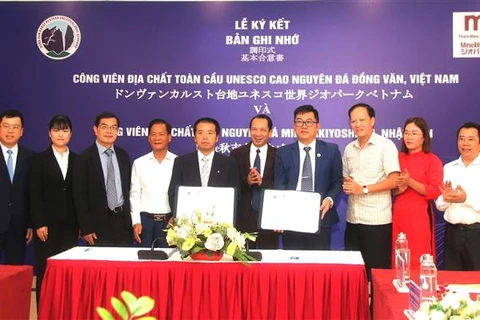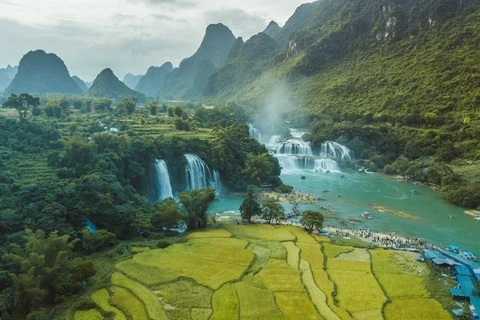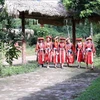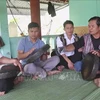 Lang Son Geopark boasts the harmonious beauty of the nature and local residents' life. (Photo: Nhan dan Newspaper)
Lang Son Geopark boasts the harmonious beauty of the nature and local residents' life. (Photo: Nhan dan Newspaper) Hanoi (VNA) – A dossier has been built by the People’s Committee of the northern mountainous province of Lang Son to seek the UNESCO recognition of Lang Son Geopark as a global one.
Covering 4,842 sq.km. across eight district-level localities, Lang Son Geopark is one of the largest of its kind in Vietnam and boasts a number of unique values.
In terms of geology, geomorphology and landscape, it is home to a rich diversity of palaeobiological fossils dating back as far as 500 million years, many of which indicate this province used to be under the sea in the past.
Moreover, this park is endowed with many renowned landscapes such as the low mountain ranges surrounding valleys and villages in Yen Thinh commune of Huu Lung district, or the caves like Tham Khuyen in Binh Gia district that accommodated prehistoric humans.
Regarding cultural values, it houses a number of temples dedicated to the gods in the worship of Mother Goddesses – an intangible cultural heritage of humanity, especially Bac Le Temple, as well as villages of Tay and Nung ethnic groups with distinctive cultures.
Pham Thi Huong, deputy head of the Lang Son Geopark management board, said the seeking of the UNESCO recognition aims to preserve and bring into play the park’s geological, geomorphological, and cultural values in a sustainable manner.
Local authorities are taking various measures for improving public awareness of the park’s values as well as protecting and making use of its values for tourism development.
The province is preparing for a verification trip by a UNESCO delegation around this July, Huong said.
Vietnam currently has three global geoparks, namely Dong Van Karst Plateau (recognised in 2010) in the northernmost province of Ha Giang, Non Nuoc Cao Bang (2018) in the northeastern province of Cao Bang, and Dak Nong (2020) in the Central Highlands province of Dak Nong./.
